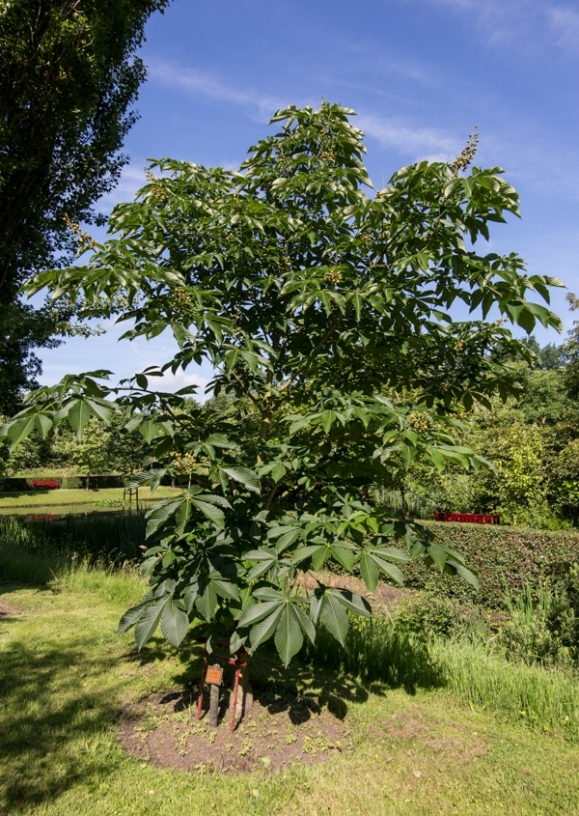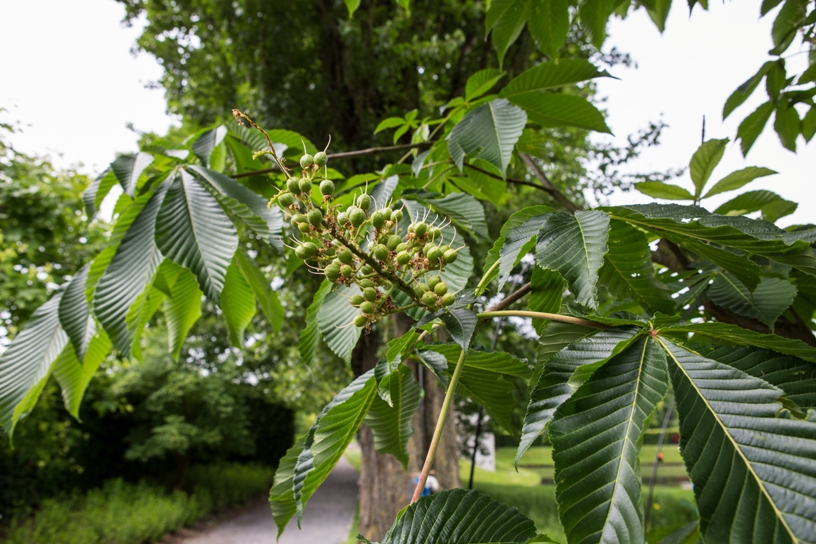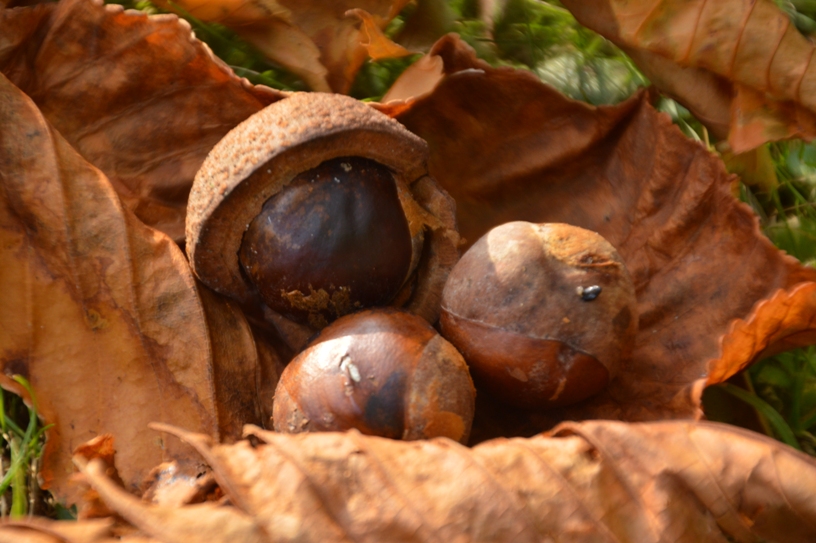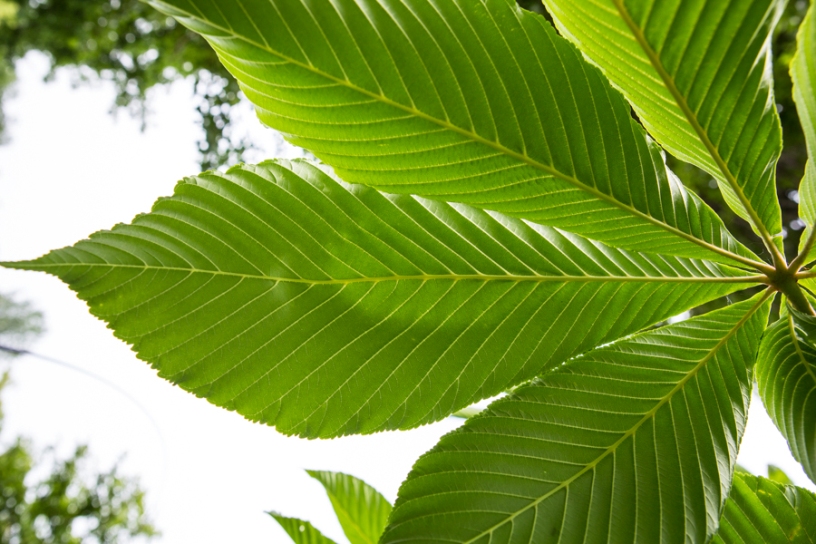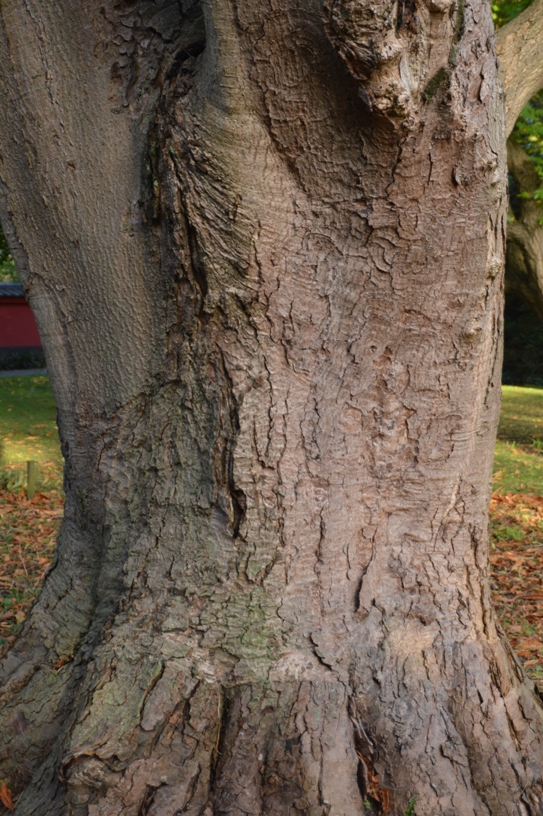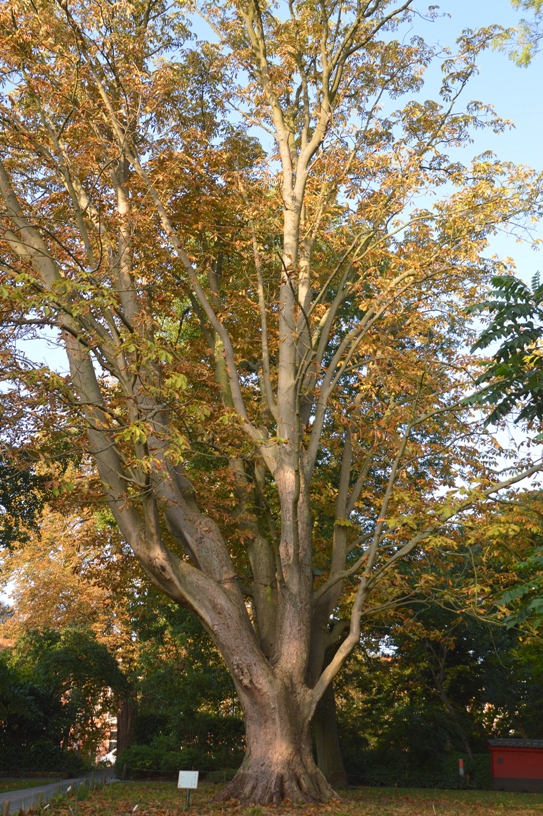Japanese Horse-chestnut
Aesculus turbinata
Soapberry family (Sapindaceae)
The giant tree of Japan
The Japanese horse chestnut originates from the north of the Japanese islands of Honshu and Hokkaido where they grow in mountain forests up to about 2000 m in altitude. Although the glossy brown buds and leaves of the Japanese horse chestnut are smaller than the buds and leaves of the European, or common, horse chestnut, in all other respects the two species closely resemble one other. The flowers appear in May usually a little later than those of the European horse chestnut. The inflorescences comprise smaller, more delicate 'candles' of creamy white flowers each bearing a red spot. The conkers of the Japanese horse chestnut sit inside more or less smooth shells, which open to reveal the conkers - shiny and dark brown in colour.
The Japanese horse chestnut in the Leiden Botanic Garden was planted in 1860.
Themes
The soft wood with its attractive grain is used for furniture. Saponins in the seed can be used as a soap substitute.
The flowers yield a lot of nectar and are therefore favoured by insects such as bumblebees.
The seeds have a high saponine content and are therefore toxic.
It is possible to remove the saponins from the seeds by heating (cooking) so that they are then suitable for consumption. In the past the seeds were used in Japan as a food source.
It is possible to remove the saponins from the seeds by heating (cooking) so that they are then suitable for consumption. In the past the seeds were used in Japan as a food source.
Details
| Description: | Tree, on average taller than 12 m |
|---|---|
| Distributions: | Japan |
| Habitat: | In ravines on damp sites along water courses and on moist mountain slopes |
| Year cycle: | Perennial (polycarpic decidous) |
| Hardiness: | -4 - 5 f (hardy - very cold winter) |
| Flowering period: | Mei - juni |
| Flower color: | White |
| Notes on flowers: | White flowers with a yellow to orangey-red spot. |
| Fruiting period: | September - oktober |
| Fruit color: | Various colours |
| Notes on fruits: | Husk, light green and more or less smooth; seed, dark chestnut brown |
| At its best: | Mei |
Sources
http://www.efloras.org/florataxon.aspx?flora_id=2&taxon_id=200013165,http://www.pfaf.org/user/Plant.aspx?LatinName=Aesculus+turbinata,
http://www.beanstreesandshrubs.org/browse/aesculus/aesculus-turbinata-blume/,
Dendrologie van de lage landen - Jan de Koning en Wim van den Broek, Dendroflora 34: 20
